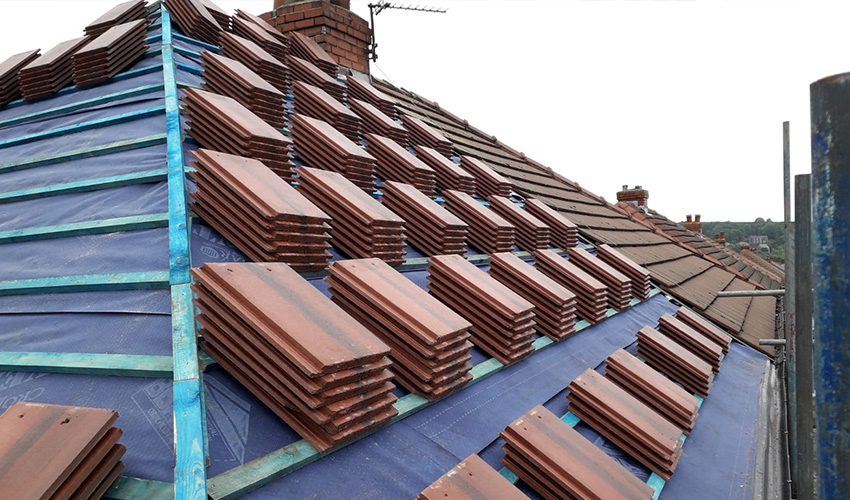
The flat roofing industry can appear uncomplicated initially, but with a little online exploration, you can quickly realise that there are countless diverse materials, systems, and brands to choose from when planning a new flat roof. So, how can you decide which one is the best?
Selecting the best flat roofing material for your roofing project
If there were a solitary material that was exceptional at everything for every roof, the roofing materials market would be a lot less complex, and we would all utilise that material. However, different flat roofing materials have distinct advantages and disadvantages that are appropriate for varying roof types and situations. To assist you in identifying the materials that are most appropriate for your project, we’ve put together a brief guide to the advantages and disadvantages of common flat roofing materials that we have installed or witnessed installed on flat roofs throughout Liverpool and the North West.
Rubber Roofing (EPDM)
Advantages of EPDM roofing
- Durable; it can last for at least 25 years when installed correctly (often even longer)
- Cost-effective for the appropriate type of roof
- Relatively low maintenance if properly installed
- Highly adaptable in cold environments
Disadvantages of EPDM roofing
Not suitable for all flat roofing situations Inappropriate for foot traffic; only light foot traffic is recommended Specialist and skilled installation is required for larger roofs to achieve ideal results. For the appropriate type of flat roof, it is challenging to surpass EPDM rubber. It has become increasingly popular in both residential and commercial flat roofing, and as time goes on, confidence in its resilience has spread throughout the flat roofing industry.
Felt roofing (Bitumen)
Advantages of Felt roofing
- Versatile for a variety of roofing requirements
- Can be very low-cost
- Practical to install on a small scale
- Reliable and quite durable when installed correctly
Disadvantages of Felt roofing
- Not the most durable roofing material even in ideal conditions
- May require more maintenance than some other roofing systems
- May encourage moss growth and be difficult to clean
Felt roofing has been a central component of flat roofing for many decades. When installed correctly on the appropriate type of roof, it can be an economical and functional option. Modern felt and installation systems have evolved steadily over the years, resulting in a neater, more durable, and lower-maintenance material. However, for many roof types, felt is simply not the best choice, as other materials have been proven to outperform it. Discover more about Felt flat roofing
Single ply membrane roofing
Advantages of Single ply membranes
- Single ply is a diverse world of materials and installation methods that has the potential to deliver a highly advanced roof with outstanding performance.
- Adaptable to complex and technical requirements
- Potential for exceptional insulation performance
- Efficient installation at scale
Disadvantages of Single ply membranes
- Not always the most affordable option
- Requires the expertise of a specialist flat roofer to provide sound advice on the type of single-ply membrane, installation system, and features needed for your specific requirements
Single-ply membranes initially gained popularity in the commercial flat roofing world. EPDM rubber roofing is only one of several popular types (and deserving of its own section), but PVC thermoplastic membranes, which are quite different from EPDM, are also available. Some of the most high-performance, low-maintenance, and visually appealing flat roofs are based on a well-selected single ply membrane material and system.
Fibreglass roofing (GRP)
Advantages of Fibreglass roofing
- Very lightweight and weather-resistant
- Extremely long-lasting
- Inexpensive and easy to repair
- Reliable and quite durable when installed correctly
Disadvantages of Fibreglass roofing
- Many fibreglass roofing installation methods require optimal weather conditions to complete
- Expert installation and advice are required to get the job done correctly
- It is sturdy and unyielding but fragile in some applications that could result in bending In numerous aspects, fibreglass roofing presents an intriguing possibility.
Its unparalleled durability, lightweight nature, UV resistance, ease of maintenance, and affordability for repairs make it a nearly perfect material for flat roofing. However, the devil is in the details, as fibreglass is not suitable for all situations and may fail in certain circumstances. An expert is required to determine when this is probable and to minimise the risk or recommend an entirely different material.
Liquid Roofing
Benefits of Liquid Roofing
- Flexible and adaptable
- Can be robust and long-lasting
- Can reduce costs by enabling refurbishment rather than roof replacement
- Tolerant of extreme temperatures
- Can be inexpensively patched up
Disadvantages of Liquid Roofing
- Not suitable for every flat roof requirement
- Does not have an especially attractive appearance
- Requires a suitable substructure and is less logical when major work is needed there
Liquid roofing techniques can be an extremely cost-effective method of enhancing the efficiency of an existing flat roof. This may require significant work and improvements to the current roof substructure to enhance its structure, ventilation, or insulation. A liquid roof can be applied more directly to other roofs. When installed correctly in many situations, it can last for many years and can be repaired inexpensively, even in cold weather. It does not provide the precise finish that other roofing systems offer, but it can be the ideal option for certain requirements.


